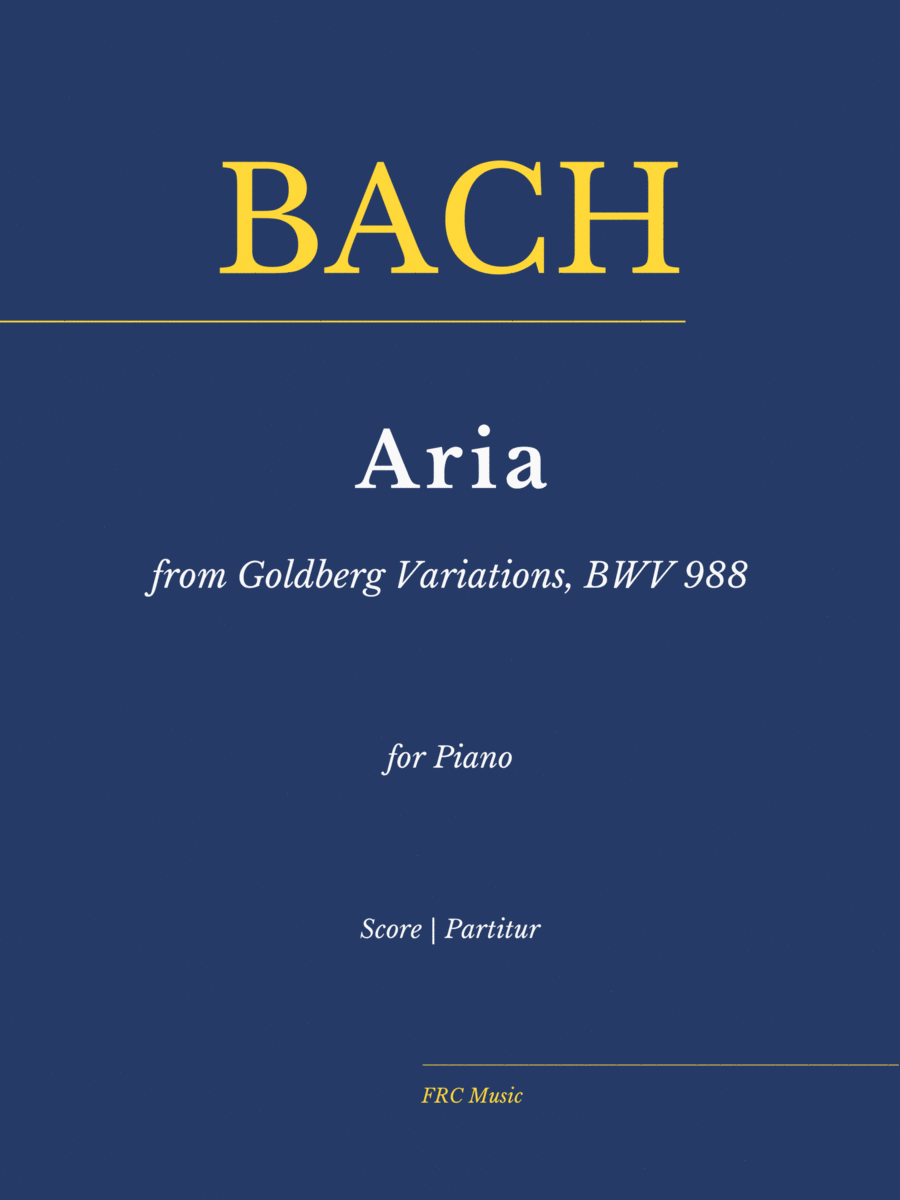Piano Solo - Level 3 - Digital Download SKU: A0.597593 By Johann Sebastian Bach and VÃkingur Ãlafsson. By Johann Sebastian Bach. Arranged by Flavio Regis Cunha. Baroque,Christmas,Classical,Easter,Wedding. Score. 4 pages. Flavio Regis Cunha #6671021. Published by Flavio Regis Cunha (A0.597593). Bach: Aria from Goldberg Variations, BWV 988 as played by VÃkingur Ãlafsson (for Piano).AdvancedFormat: Concert, 9 x 12 inches4 pages.PLUS: Engraved and Published with Urtext Kapellmeister Music Fonts.Acclaimed for his visionary interpretations of J.S. Bach, VÃkingur Ãlafsson, a leading pianist and contemporary musical genius, now takes on the monumental task of presenting Bachâs Goldberg Variations. The upcoming season is dedicated entirely to a global tour across six continents, with the eagerly awaited album slated for release in October 2023 on Deutsche Grammophon. Ãlafsson shares, I have harbored the dream of recording this piece for 25 years.This album follows the resounding success of Ãlafssonâs 2018 DG recording of Johann Sebastian Bach's works, which not only clinched BBC Music magazineâs Album of the Year but also secured Opus Klassikâs Solo Recital award and several other recording of the year accolades. Such achievements led to his well-deserved recognition as Gramophone magazineâs Artist of the Year. Now, Ãlafsson directs his distinctive musical vision and meticulous recording finesse toward Bachâs masterpiece, embarking on his first complete work recording, starting with one of the most demanding pieces in the piano repertoire.In the 2023-24 season, Ãlafsson sets forth on a Goldberg Variations world tour, gracing renowned concert halls worldwide, including Londonâs Southbank Centre, New Yorkâs Carnegie Hall, Wiener Konzerthaus, Philharmonie de Paris, Tokyoâs Suntory Hall, Philharmonie Berlin, Harpa Concert Hall, Sydney Opera House, LAâs Walt Disney Hall, Sala São Paulo, Shanghai Symphony Hall, Tonhalle Zurich, KKL Luzern, Alte Oper Frankfurt, Mupa Budapest, and Teatro Colón, to name a few.Reflecting on the profound impact of the Goldberg Variations, Ãlafsson comments, âThe Goldberg Variations contain some of the most virtuosic keyboard music ever written, brilliantly employ counterpoint, and evoke exalted poetry, abstract contemplation, and deep pathos â all within meticulously crafted structures of formal perfection. In 30 variations, based on the humble harmonic framework of a simple, graceful aria, Bach transforms limited material into boundless variety like no one before or since. He stands as the greatest keyboard virtuoso of his time.âThis score has been painstakingly reedited. We offer here a clear edition, with indications of ornaments based on the edition by Bärenheiter, 1977.Listen to VÃkingur Ãlafssonâs album âGoldberg Variationsâ here: https://dg.lnk.to/vikingur-goldberg Discover full concert performances and operas on STAGE+, the new streaming service from Deutsche Grammophon: https://www.stage-plus.com/.
